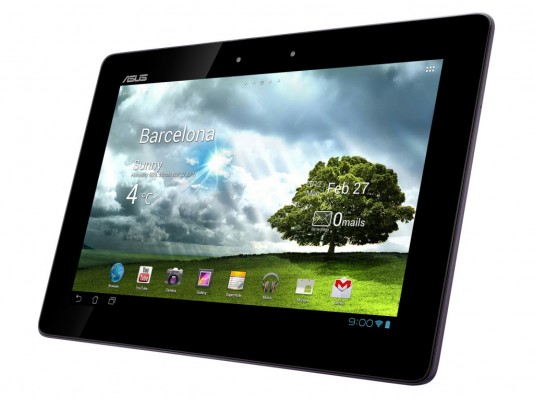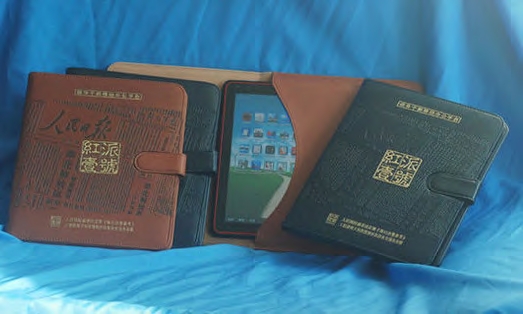Fifty percent of the top brand tablets run on Nvidia Tegra mobile CPU.
By Jon Peddie
When Apple and Samsung owned the tablet market in 2010, the market for tablets was segmenting into greater than or less than 8 inches, with greater-than being supplied by the big brand names. Both types of tablets used Imagination Technologies’ GPU and home-grown ARM processors.

In late 2011 Asus and Amazon introduced their tablets, one greater than 8 inches and one less, respectfully. Asus was the first to use Tegra in a 10-inch tablet, while Amazon continued using Freescale. Asus is the smallest brand of the group, but it is nonetheless well respected and recognized.
Within the last 30 days, the two biggest brands, Google and Microsoft, announced a 7-inch and 10-inch tablet, respectfully, both powered by Tegra, bringing Nvidia’s penetration in the tablet market via big name brands to three, 50% of the players.
The shipment success of these brands and subsequently their processors won’t be known for a year, and it will be highly influenced by the holiday season. And unlike the Apple iPad, no lines formed in front of stores 24 hours before the announcement of the Google or Microsoft devices.
Apple and Samsung hold the big numbers in shipments, and that’s not likely to change quickly. Also, Apple may roll out their lawyers after they have had a couple of weeks to disassemble the Google Nexus 7 and Microsoft Surface and find all the places of infringement. And Amazon is likely to throw some lawyers at Google, and maybe Microsoft too, because of the Barnes & Noble deal (not the screen size).
Even though the tablet market is still growing, and we think its growth rate relative to notebooks will be even greater for another year or so, the marketing expense and BOM pressure to win consumers is going to be horrendous. Of the top brands, only Microsoft has the money to carpet-bomb every media source and surface (no pun) to make their tablet impossible to ignore. None of the brands, with the possible exception of Samsung, can get the cool factor like Apple. Asus is the least well equipped to be in this fight, as clever as their design is.
Marketing marketing marketing—and lawyers
Tablets are consumer goods. Apple knew that before it launched the iPad. Samsung, which comes from a rich and successful consumer TV background, fighting the likes of Sony and LG, gets it. Microsoft never quite got it, although the company has done an admirable job with the Xbox360 (even though that device practically sells itself). Google has never been in the consumer hardware business, Amazon gets it totally, and Asus kinda gets it but doesn’t have the check book to really play with the big brand guys.
In PC land, the OEMs like Asus and HP get marketing subsidies from their suppliers like AMD, Intel, and Nvidia. However, that logo label marketing subsidy program doesn’t work in consumer products—at least not yet—so the brands are on their own. Samsung hardly needs handouts from hmmm, whom—they make their own chips. Same for Apple. Amazon would never share prime marketing space with a lowly semiconductor supplier, and Google? Who knows what strategy Google will employ with their consumer tablet. Asus is tightly wed to Nvidia’s marketing largess, but even with it, that’s not enough to stand up to billboards in Times Square, company stores in major retail centers, and 20-second TV spots.
So the screen sizes have been picked, the processors have been selected, and to a certain extent the marketing direction has been set by the big brands. Now all that’s left is to see is which one has the best marketing and toughest lawyers. If Apple or Microsoft is successful in blocking a competitor from selling (as Apple has achieved with Samsung), that is another overlaying dynamic in the equation for success. It’s not about the silicon behind the screen; it’s the marketing and lawyers.
Nvidia has done a good job of getting established in the tablet space, but their success is out of their hands now. Now it’s in the hands of the suits.
Chinese footnotes: In addition to the big brands, Nvidia also has the distinction of being in one of the most expensive tablets, the pricey RedPad for Chinese government big shots.
The RedPad sells for 9,999 RMB ($1,580) over two times what any other tablet sells for. A Tegra 2 powers the 9.7- inch screen with a resolution of 1024 x 768 pixels.
Also, Lenovo threatened to release a 10.1-inch Ice Cream Sandwich tablet with 1.6 GHz Tegra 3 last year, but it hasn’t shown up yet.






